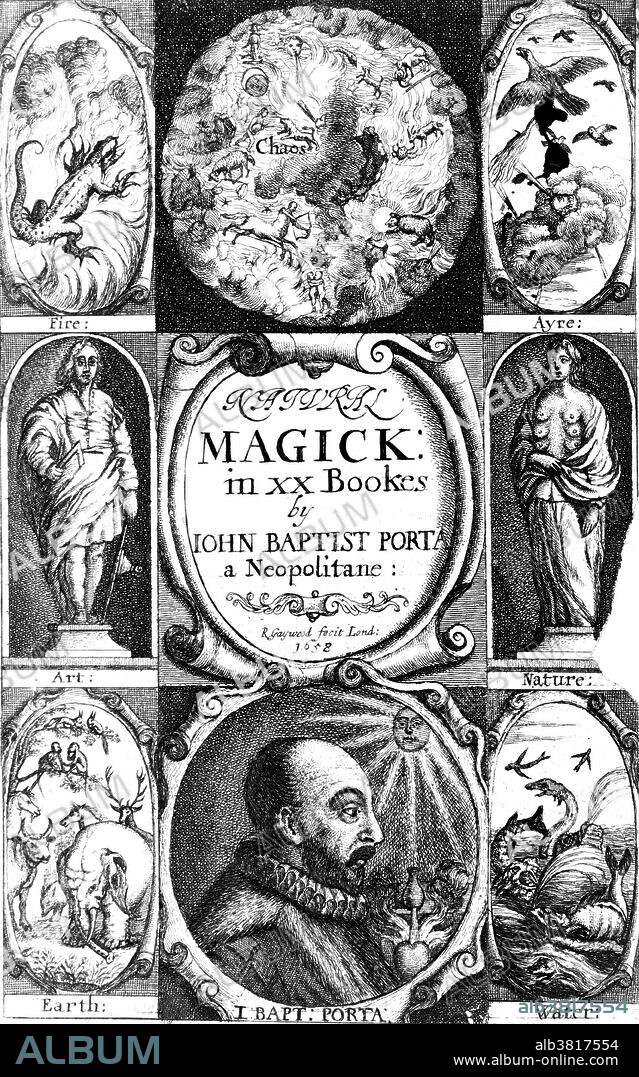alb3817554
Giambattista della Porta, "Magiae Naturalis"

|
Zu einem anderen Lightbox hinzufügen |
|
Zu einem anderen Lightbox hinzufügen |



Haben Sie bereits ein Konto? Anmelden
Sie haben kein Konto? Registrieren
Dieses Bild kaufen.
Nutzung auswählen:

Titel:
Giambattista della Porta, "Magiae Naturalis"
Untertitel:
Siehe automatische Übersetzung
Giambattista della Porta (1535 - February 4, 1615) was an Italian scholar, polymath and playwright who lived in Naples at the time of the Scientific Revolution and Reformation. His most famous work, first published in 1558, was entitled Magiae Naturalis (Natural Magic). In this book he covered a variety of the subjects he had investigated, including the study of: occult philosophy, astrology, alchemy, mathematics, meteorology, and natural philosophy. In 1563, della Porta published De Furtivis Literarum Notis, a work about cryptography. In 1586 della Porta published a work on physiognomy, De humana physiognomonia libri IIII. His interest in a variety of disciplines resulted in the technological advances of the following: agriculture, hydraulics, military engineering, instruments, and pharmacology. The 17 theatrical works that have survived comprise 14 comedies, one tragicomedy, one tragedy and one liturgical drama. He died in 1615 at the age of 79 or 80.
Bildnachweis:
Album / LOC/Science Source
Freigaben (Releases):
Bildgröße:
3300 x 5292 px | 50.0 MB
Druckgröße:
27.9 x 44.8 cm | 11.0 x 17.6 in (300 dpi)
Schlüsselwörter:
16. JAHRHUNDERT • 16. JH. • ALCHEMIE • ASTROLOGE • ASTROLOGIE • BERÜHMT • BERÜHMTE PERSÖNLICHKEIT • EUROPAEER (F M) • EUROPAEER • EUROPÄER (F M) • EUROPÄER • EUROPÄISCH • FRONTISPIZ • ILLUSTRATION • ILLUSTRATIONS • MANN • METEOROLOGIE • NATURPHILOSOPH • NATURPHILOSOPHIE • NATURWISSENSCHAFTLER • NOTABEL • PERSON • PERSöNLICHKEITEN • PERSÖNLICHKEITEN • PROMINENZ • WISSENSCHAFTLER • WISSENSCHAFTLICH


 Pinterest
Pinterest Twitter
Twitter Facebook
Facebook Link kopieren
Link kopieren Email
Email
